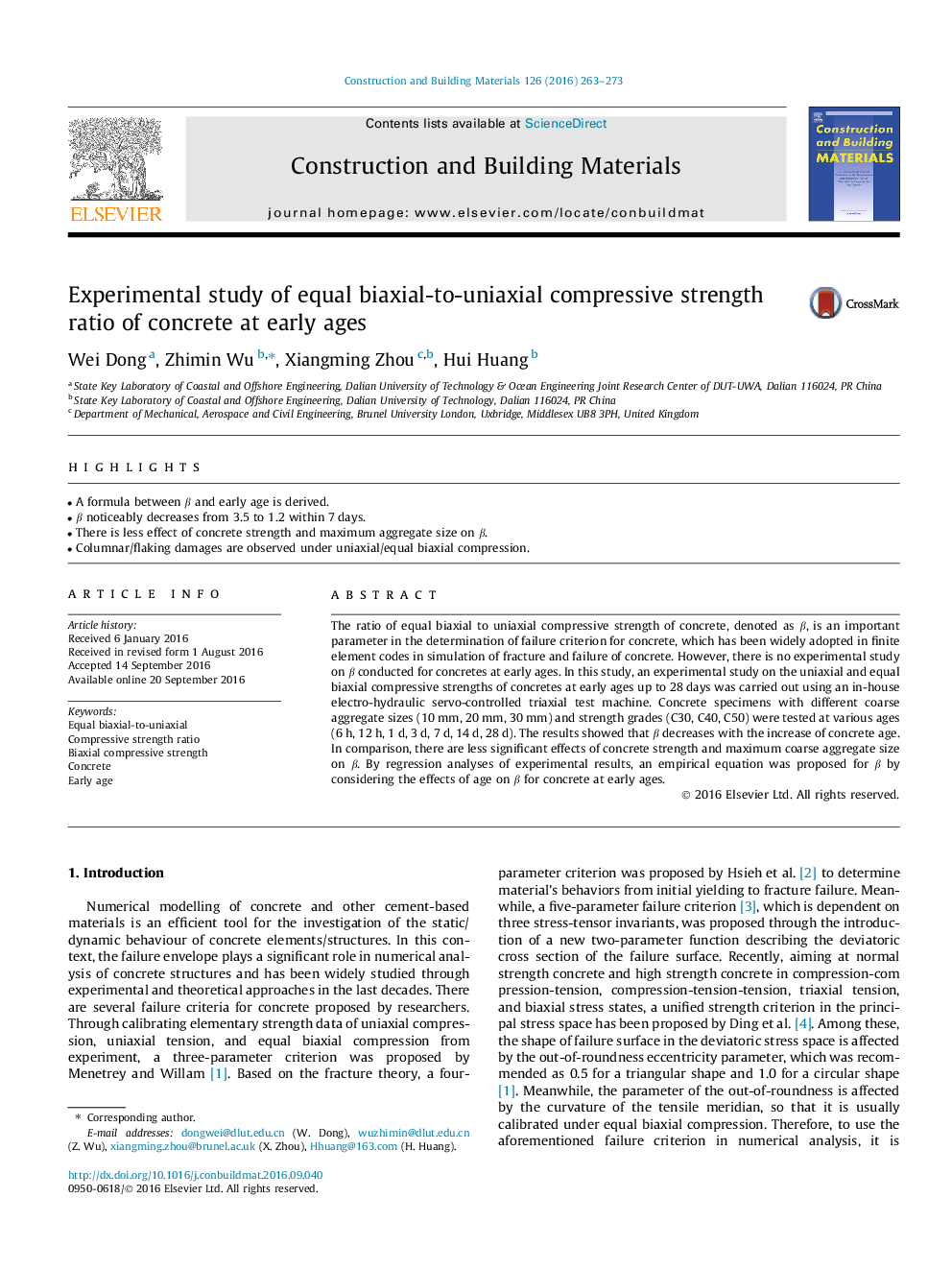| Article ID | Journal | Published Year | Pages | File Type |
|---|---|---|---|---|
| 6480861 | Construction and Building Materials | 2016 | 11 Pages |
â¢A formula between β and early age is derived.â¢Î² noticeably decreases from 3.5 to 1.2 within 7 days.â¢There is less effect of concrete strength and maximum aggregate size on β.â¢Columnar/flaking damages are observed under uniaxial/equal biaxial compression.
The ratio of equal biaxial to uniaxial compressive strength of concrete, denoted as β, is an important parameter in the determination of failure criterion for concrete, which has been widely adopted in finite element codes in simulation of fracture and failure of concrete. However, there is no experimental study on β conducted for concretes at early ages. In this study, an experimental study on the uniaxial and equal biaxial compressive strengths of concretes at early ages up to 28 days was carried out using an in-house electro-hydraulic servo-controlled triaxial test machine. Concrete specimens with different coarse aggregate sizes (10 mm, 20 mm, 30 mm) and strength grades (C30, C40, C50) were tested at various ages (6 h, 12 h, 1 d, 3 d, 7 d, 14 d, 28 d). The results showed that β decreases with the increase of concrete age. In comparison, there are less significant effects of concrete strength and maximum coarse aggregate size on β. By regression analyses of experimental results, an empirical equation was proposed for β by considering the effects of age on β for concrete at early ages.
